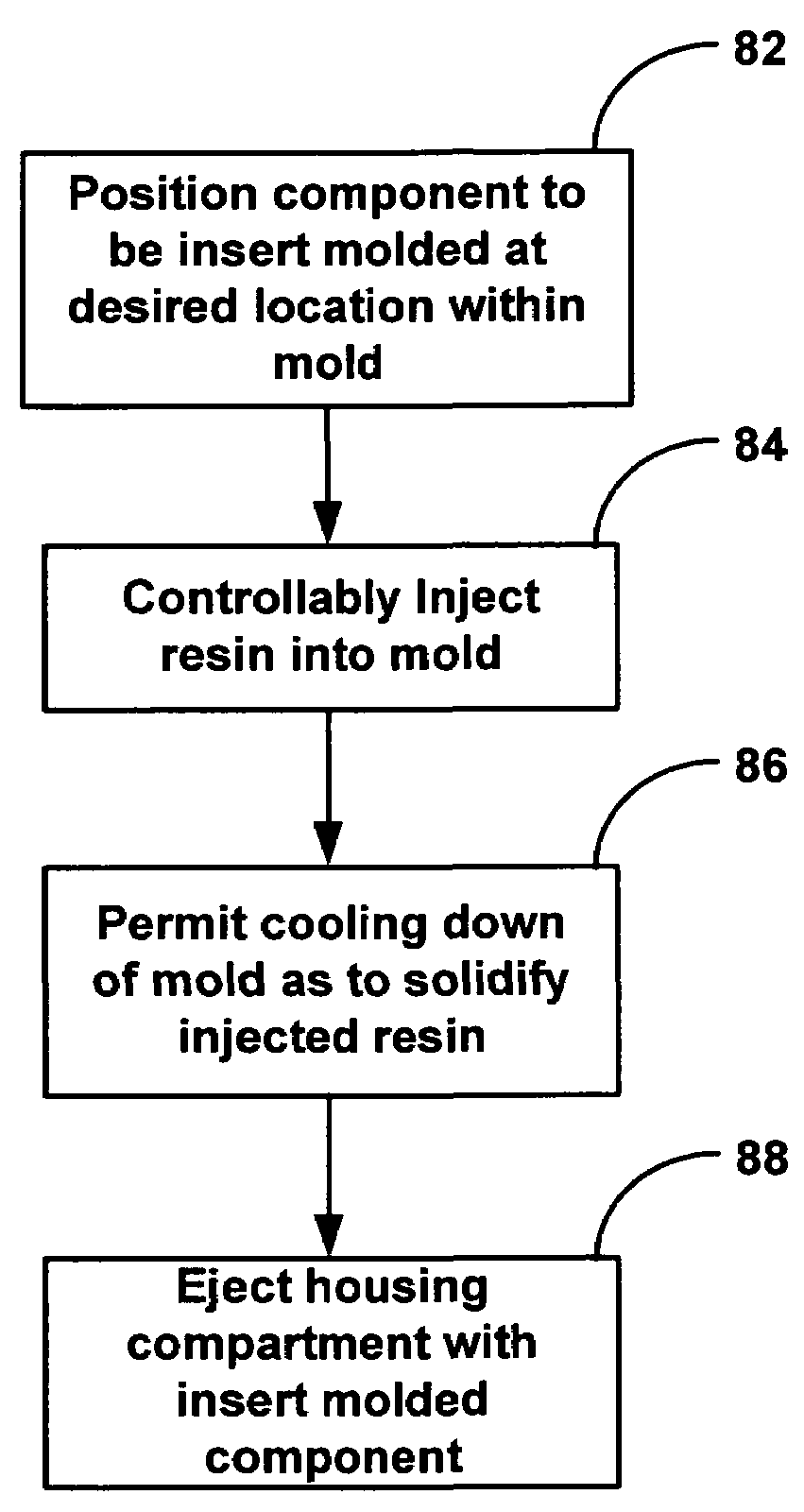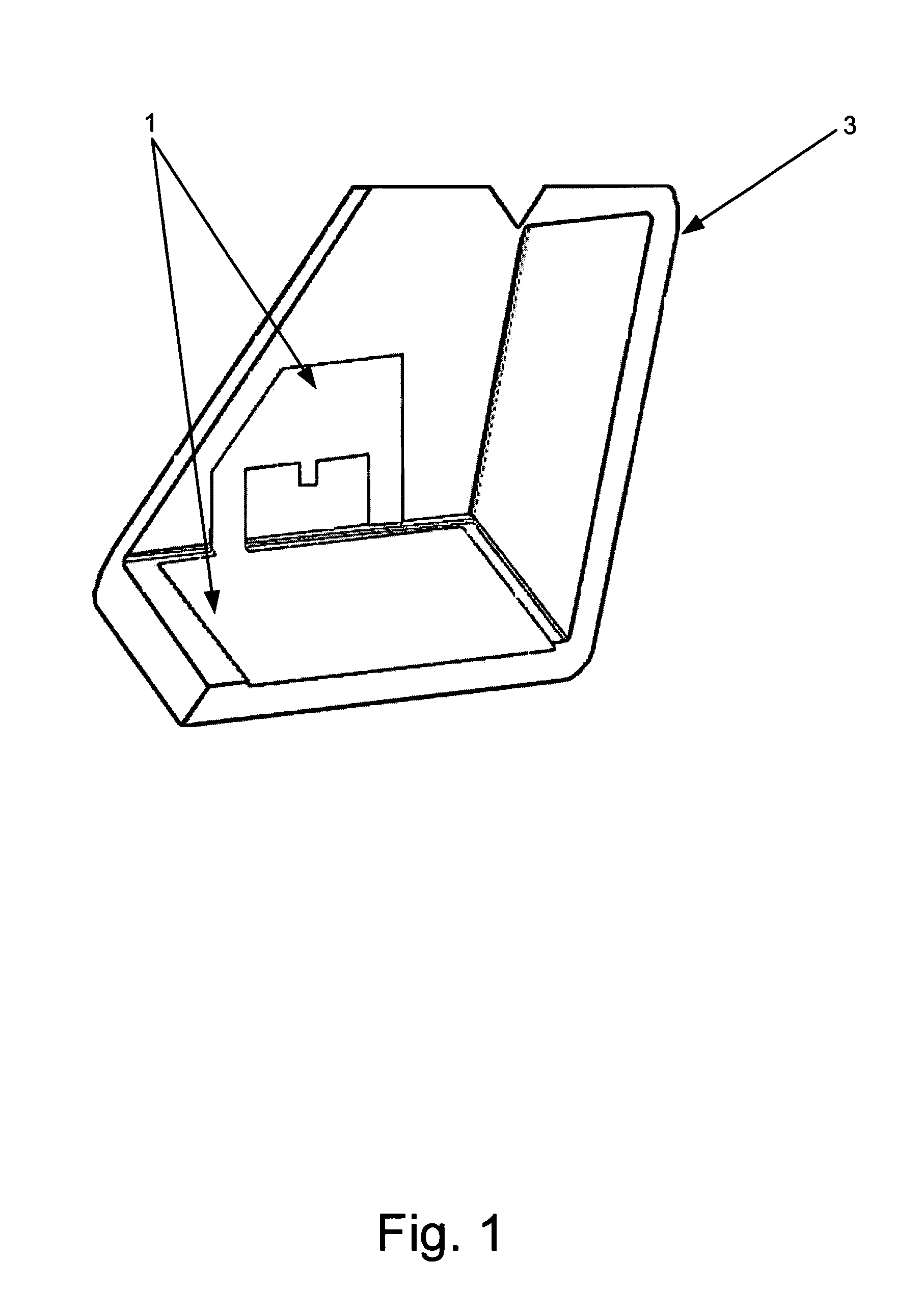Insert molded antenna
a technology of molded antennas and antennas, applied in the field of inserting molded antennas, can solve the problems of cumbersome and aesthetically undesirable, many electronic units such as hand-held mobile terminals, communication units, etc., and achieve the effect of reducing damage susceptibility, facilitating optimization of antenna geometry and aperture, and improving connectivity
- Summary
- Abstract
- Description
- Claims
- Application Information
AI Technical Summary
Benefits of technology
Problems solved by technology
Method used
Image
Examples
Embodiment Construction
[0029]The various aspects of the present invention will now be described with reference to the drawings. The invention provides for an apparatus and method for insert-molding various electronic and mechanical parts as part of a housing of an electrical device. The insert-molded parts can be any component amenable to holding up during various insert-molding process steps. Examples of such insert-molding components can include, various type of antennas, flexural members associated with connections, various input / out put devices such as key pad arrangements, circuit boards and the like.
[0030]Referring initially to FIG. 1 a fragmentary perspective view is illustrated that shows an exemplary aspect of the present invention. An antenna 1 is being insert-molded as part of a portion 3 of a housing. The housing can be applied for containment of an electronic device, such as devices employed in numerous types of commercial and industrial applications, (e.g., computers, personal digital assist...
PUM
 Login to View More
Login to View More Abstract
Description
Claims
Application Information
 Login to View More
Login to View More - R&D
- Intellectual Property
- Life Sciences
- Materials
- Tech Scout
- Unparalleled Data Quality
- Higher Quality Content
- 60% Fewer Hallucinations
Browse by: Latest US Patents, China's latest patents, Technical Efficacy Thesaurus, Application Domain, Technology Topic, Popular Technical Reports.
© 2025 PatSnap. All rights reserved.Legal|Privacy policy|Modern Slavery Act Transparency Statement|Sitemap|About US| Contact US: help@patsnap.com



